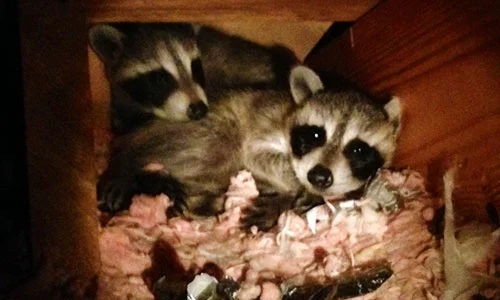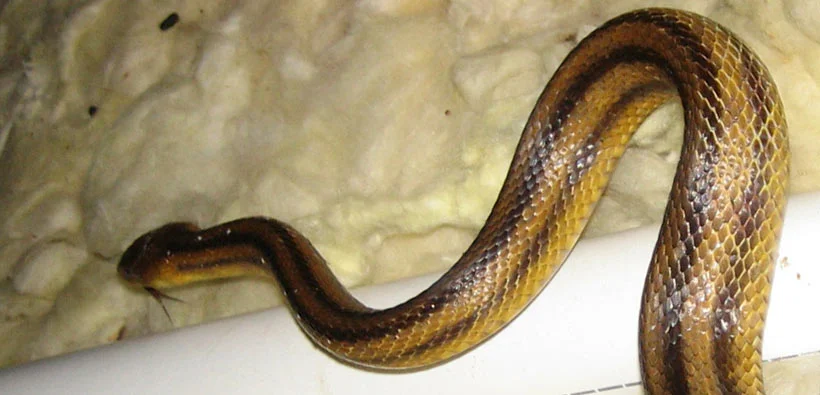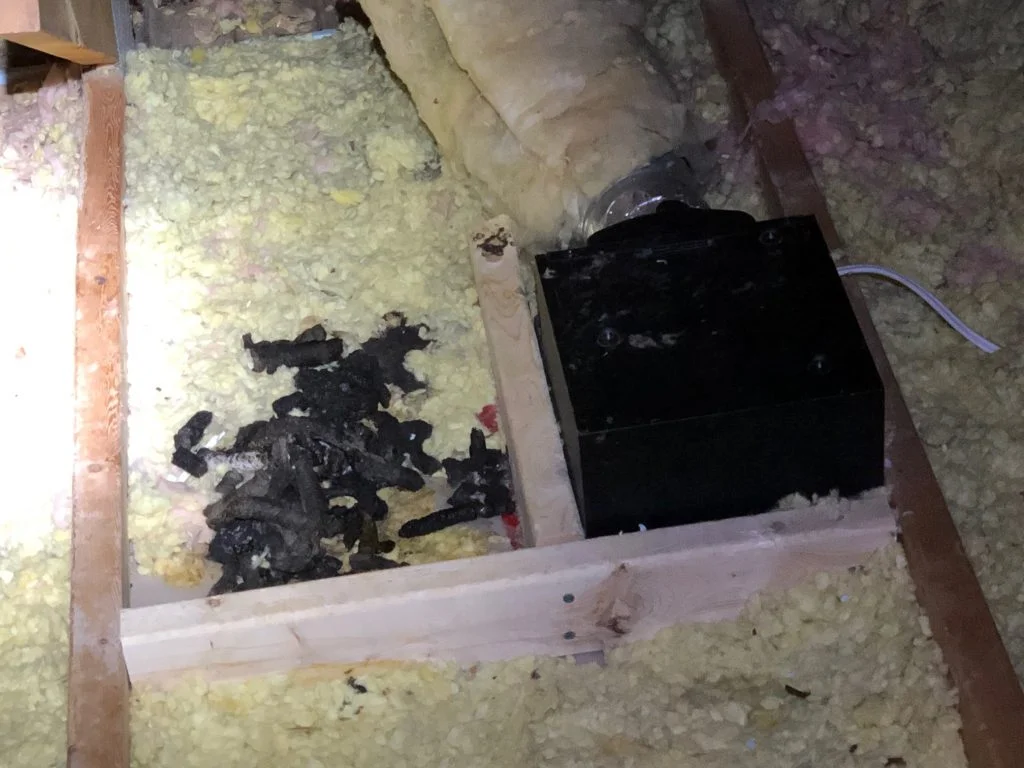
We love our homes because they provide us with a warm, dry, covered shelter to keep us protected even in the worst weather. But, unfortunately, many types of wild animals also get attracted to the warm and cozy refuge of your attic and make their dens up there to keep them safe from cold weather, rain, and snow.
Does it sound like there is a party going on in your attic? Thumping and scratching noises are some of the sure signs of wild animals sharing your living space. Not only is their presence in your attic is annoying, but they can also cause a significant amount of structural damage to your house.
Attics often have many important electrical wires, parts of cooling and heating systems, and piping that these animals can greatly damage. In addition, these wild animals often have sharp teeth that never stop growing. In order to keep them short, they have to gnaw on things, and nobody wants the electrical wiring and pipes of their house to fall victim to this chewing. In addition, these wild animals can also disturb the insulation of your house, allowing air conditioning or heat to escape, which results in a higher energy bill.
When we have provided our wildlife removal services in Dallas-Fort Worth, we have found that apart from causing structural damage to your property, these wild animals in the attic also carry many severe diseases, parasites, and fleas which can affect anyone in your home. In short, these wild animals are not the type of guests you want to welcome into your house. Therefore, you must stay on top of attic critter control methods and regularly inspect what is going on in the attic.

As wildlife removal experts, we always tell homeowners that the attic of their house is the perfect spot for many wild animals to take shelter and even raise their babies safely. Many wild animals will like the fluffy insulation of your attic to tunnel and nest in. Some types of animals that can get into your attic, especially in the winter season, are:
Rats, as much as any animal, like to live near human habitation. They can climb just about anything and can crawl through the holes the size of a quarter. Once they gain access to your house, they can nest effectively anywhere, but the attic is undoubtedly their favorite place to hide.
They may appear to be cute and furry creatures, but they can cause a great amount of physical damage to your property. With much of their body comprised of fur, squirrels can fit through 1 ½ inch diameter holes and gain access to your living space.
Raccoons are expert climbers and often gain access to your house through roof vents, chimneys, and soffits. They are large animals and can cause many thumping noises in your attic, usually at night time.
Opossums are less common in attics because they need a large opening for their entry. However, once they have gained access to your attic, they can create a large and smelly mess due to the large size of their droppings.
Bats are one of the most silent visitors that you can encounter in your attic. They can enter your house through an opening as small as 1 ½ inches. The best way to know they are in your attic is to see them flying in and out.
Snakes are one of the most dangerous types of wild animals that you can have in your attic. They can go months without eating and are extremely difficult to catch. They are nearly silent, but you can easily detect their presence since shed periodically shed their skin.

Birds are often left out when discussing animals in the attic since they are generally not problematic and they usually do not seek out attics for shelter like other animals. However, in reality, birds can make a big mess in your attic with their nests and droppings.
It is quite normal to suspect that some unwanted guests are living in your attic, but it might be challenging to figure out what kind. Here are some of the signs you need to look out for:
To figure out what kind of animal is living in your attic, you need to listen carefully to the types of sounds coming from above. For example, hearing a scurry of activity, especially during the daytime, is one of the most common indicators that we have found in our experience, indicating that you likely have a family of squirrels living in your attic.
However, if you hear more of a scratching sound, you probably, have a mouse or rat problem. If you hear heavy thumping sounds at night, it is most likely raccoons or opossums.
If you hear fluttering and chirping sounds, it could be bats or birds living in your attic. Wild animals entering your attic are often nocturnal, so the perfect time to listen for sound is at night.
Another way to decipher what type of animal is causing a disruption in your attic is their droppings. Animal removal experts like Critter Stop can identify the exact animal you are dealing with, but generally speaking, the larger the dropping, the bigger the animal.
Roof rats have feces approximately the size of rice, with a pointed end. Squirrels have slightly larger feces shaped like a pill or a barrel. For larger animals, like opossums and raccoons, which usually have feces the size of a mid-size dog, the best way to tell the animal is by where the feces is located. Opossums will leave feces sporadically throughout the attic while raccoons will create one or more designated latrines.
Regardless of the size, wild animals can carry many diseases in their droppings, so make sure to wear masks and gloves when disposing of them.

Wild animals will never appear in your attic miraculously. Instead, each animal will have a different tactic for gaining access to your home, depending on its ability and size. So, you need to examine the outside of your house, especially around the roof vents, soffits, and eaves, in order to identify what kind of animal is living in your attic.
If the hole is small as 1 ½ inch in diameter and also chewed upon, then it is a squirrel. However, a small gap with brown grease will indicate the presence of rats in your house. On the other hand, if it is a large hole with damage such as torn roof vent or rotted soffit, it is likely a raccoon.
Wild animals in the attic can cause significant structural damage to your property. So, if you see chew marks on electrical wires, that is probably the work of squirrels and rats. However, if you come across a completely torn-up duct or pipe, the attic is likely raccoon-infested.
Attic critter control can be quite challenging. However, once you have identified the type of animal living in your attic, you can easily get rid of them without putting yourself in danger. Some of the tips on getting rid of critters in the attic are:
If you find these wild animals wandering around your attic or home, you must remain extra careful and calm. Do not forget to maintain your distance as most of them, especially raccoons, can cause harm to you if they feel threatened. Even one scratch or bite can cost you your life since they are known carriers of a variety of potentially deadly diseases.
The best thing you can do is make the environment unfavorable for them, such as turning on all the lights and blaring your favorite song. Since they prefer quiet and dark spaces, it is unlikely that they will stick around for long.
If your attic’s unwanted guests are not leaving, other attic critter control methods can be used to get rid of them. Trapping is one of the most effective ways to ensure critter removal from the attic.
You still need to be careful when trapping them because if they are not trapped appropriately, they can become very aggressive and cause harm to you and your loved ones. It is also necessary to look out for babies and remove them as well so you are not left with little babies with no mother to take care of them.
Dealing with wild animals by yourself can be risky, especially when the animal is dangerous and can be carrying many harmful diseases. Oftentimes, the best way to get rid of all the wild animals from your attic is to enlist the help of professionals.
So, to keep yourself and your loved ones safe from a worst case scenario, call in the experts. Critter Stop is one of the reliable animal removal service companies in the Dallas-Fort Worth metroplex. We allow you to sleep peacefully knowing the problem will be solved quickly, humanely, and permanently.
Wild animals can cause a massive nuisance for homeowners after gaining access to their homes. It is necessary to look at the clues left behind to identify the type of animal living in your attic. Once you know the kind of animal living in your attic, you can devise the best strategy for their removal.
Due to critters’ persistence and creativity in continually finding new entry points, it is often worth investing in an animal removal service, such as that provided by Critter Stop. We have handled our fair share of wildlife and know how to get rid of wild animals in the attic permanently. Call us at (214) 234-2616 , and let us be your permanent animal solution!
Visit our Critter Library and learn more about our furry friends